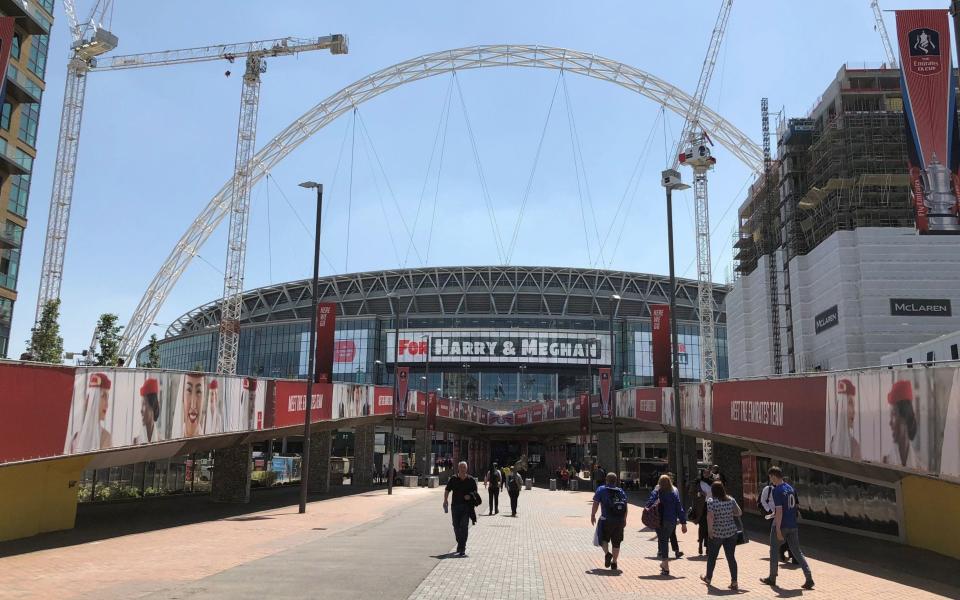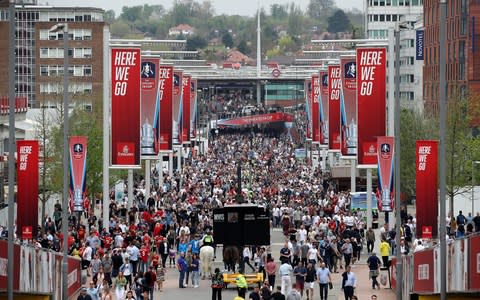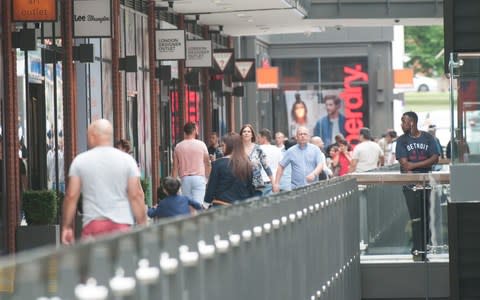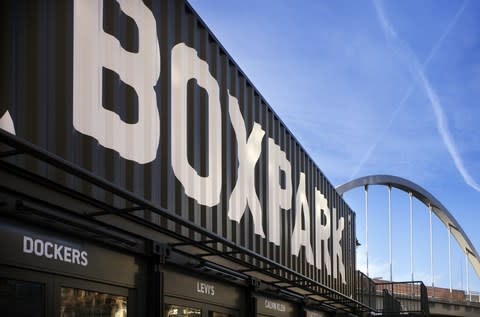Wembley redevelopment aims to make it about more than just football

As England’s football team seek glory in Russia, closer to home the area around the country’s national stadium is beset by feverish activity.
Wembley is becoming almost unrecognisable as the down-at-heel London neighbourhood it once was.
Across the skyline all around the famous arch of the stadium, tower blocks are emerging from the ground as an ambitious project to regenerate a huge 85-acre site comes to fruition.
This is a particularly busy time for the developer behind the plans, Quintain.
The weeks of rest between the end of the football season and the start of matches in the autumn mean fewer fans are travelling along the famous Wembley Way, granting the construction teams more room to work.
For almost 100 years, Wembley Stadium and the nearby SSE Arena have been recognised as world renowned venues, attracting more than 4m visitors each year. But the area suffered from a lack of investment and new homes have been few and far between.
Fans travelling to matches or concerts in the area were limited to a small number of pubs and just a few options to buy food.

Quintain stepped in back in 2012, buying swathes of land which had previously been little more than grotty office blocks, with ambitions to transform the area into a new cultural and employment hub for the capital.
The scale of the project is extraordinary. In a single day, the company spends £1.5m on construction. There are currently 19 cranes working on site – more than have been on any other site in the UK simultaneously in the last decade.
The finished redevelopment, known as Wembley Park, will be one of the biggest projects of its kind in Europe.
When complete, Quintain will have built more than 7,000 new homes and office space for an estimated 14,000 workers.
All those extra people need extra amenities, and it is here that Quintain is having to work hard to reassure its critics. As consumer spending is squeezed, people are likely to eat out less, putting plans for numerous new bars and restaurants in the area at risk. A new theatre and concert venue will fall flat unless ticket sales can be maintained.
With so much going up so fast, Wembley risks becoming a soulless enclave.
But Matt Slade, Quintain’s retail director, thinks the outlook is bright. At the heart of the redevelopment is the London Designer Outlet.

He says this, the first part of Quintain’s master plan, has been a good test bed for its theory that the area is ripe for change.
On a weekday afternoon the shops are pleasantly busy, as people stroll through the shaded walkways or stop to watch a World Cup football match being shown on a big screen.
The outlet has 70 stores, restaurants and coffee shops, a nine-screen Cineworld and a large children’s play park, the latter of which draws almost as many people as the shopping.
Quintain’s success has been largely due to attracting major names and a number of firsts. A Haribo outlet is proving enormously popular.
But what has really helped attract retailers is a clever rent model which means they pay rent based on their takings. The rents are set at a low level and on short lease lengths, but the retailers share turnover with Quintain – as they do better the landlord benefits. “It has meant retailers have opened with more confidence.”
The area is due to get the latest iteration of pop-up shopping destination Boxpark, where retailers and food outlets trade from shipping containers.
Two existing Boxparks in Croydon and Shoreditch have attracted a young crowd via their trendy food offerings, and Quintain hopes to do the same for Wembley.

But it hasn’t all been plain sailing. In a bid to enliven the area even while the construction work was going on, Quintain offered pitches to street food vendors. Unfortunately, they lacked the crowds to feed. “We spent a year with these stalls on a Wednesday, funding them, and no one went to them,” Slade says, with a grimace. “We were asking them not to leave.”
However, trade eventually picked up and the demand is now so high that the stalls are in place every day.
Quintain is ploughing huge amounts of money into events in a bid to get people to stay. There is a big screen being built which will show Wimbledon and Bollywood films, reflecting the area’s cultural make-up, over the summer.
Eventually, four large bars will be built at the base of new towers containing homes and office space, but the developer has shied away from putting in a new bog-standard pub.
“Young people in particular are drinking less than they ever have done, so these have to be bars offering something above and beyond just somewhere to get a drink.”

Added to that, the nearby Fountain Studios, where The X Factor, Britain’s Got Talent and Pop Idol were filmed, are being turned into a new state-of-the-art theatre.
There are also plans for a small music venue, which Quintain hopes will take its acts from local buskers and could eventually feed performers to the arena.
Wembley is within an hour’s travel for around 10m people. Quintain hopes that a few of those will visit it in the coming years.
“Unless you are going to the football, people don’t think about going to Wembley for a great day out,” Slade says. “We hope that will change.”

 Yahoo Sport
Yahoo Sport 





































